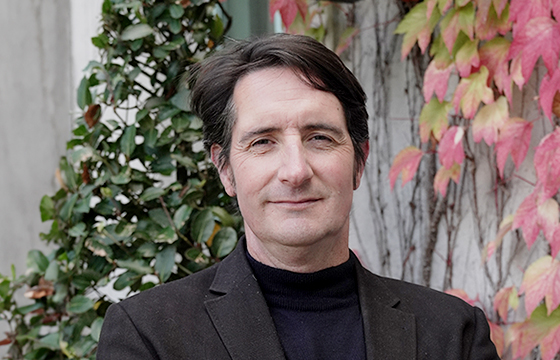On average, it takes between eight weeks and four months for people with HS to heal from surgery. The larger the area removed, the longer the healing time is likely to be.
Surgery and other medical procedures can be helpful in relieving the symptoms of severe HS and preventing it from coming back, particularly when other treatments, such as conventional medications, haven’t worked.
Surgical procedures
Surgery is considered one of the best ways to treat the symptoms of severe hidradenitis suppurativa. Your dermatologist may recommend it if your symptoms continue after you have tried conventional treatments.
Deroofing
Deroofing is a minimally invasive surgical procedure that treats the parts of your skin affected by mild-to-moderate HS while saving as much of your healthy skin as possible.
In deroofing surgery, a local anaesthetic is used while a surgeon removes the top of an abscess or sinus tract (tunnel) using either a scalpel or electrosurgery (which uses an electrical current to make the incisions instead of a scalpel). The surgeon then scrapes away the affected skin, leaving the rest of the skin to heal.
Deroofing surgery tends to be better at preventing abscesses from coming back than other procedures like incision and drainage. It also helps minimise scarring and is especially useful when treating moderate-to-mild HS at Hurley stages I and II .
Excision
Excision is a more invasive procedure than deroofing as it involves removing an entire area of affected skin under local anaesthetic.
Excision can be limited, which means each area of affected skin is removed separately, or wide, which means an area of skin covering all the abscesses is removed in one go. Most surgeons recommend wide excision along with removing other areas of skin that contain hair follicles and sweat glands. This helps prevent more abscesses from forming in the future.
Incision and drainage
In severe HS, incision and drainage can help to temporarily relieve painful abscesses. Under local anaesthetic, a cut is made to drain the abscess. Unfortunately, abscesses almost always return sometime after having this procedure and so many surgeons prefer to use other surgical methods to treat HS.
Carbon dioxide laser therapy
Carbon dioxide (CO2) laser therapy vaporises abscesses, sinus tracts and scar tissue on affected areas of skin which are then left to heal. It can be performed under local or general anaesthetic.
This technique allows the surgeon to explore deep below the surface of the skin to locate sinus tracts and is best used on abscesses that return after being treated using other methods.
CO2 laser therapy can be more invasive than some other surgical procedures, but has several advantages:
- Fewer abscesses return
- Improved healing
- Healthy skin is preserved
- Treated areas tend to have a better appearance compared to excision
After surgery
How long does it take to recover?
Will abscesses return?
Abscesses don’t usually form again in treated areas but may form again in other areas, depending on what kind of procedure you have. Up to 41% of patients who undergo surgery for their HS may experience recurrence, but further surgery may help. Speak with your dermatologist or surgeon if you have any concerns about the possibility of abscesses coming back after surgery.
Does surgery leave scars?
Unfortunately, scarring is common after any type of surgery - however, studies have shown that most people with HS are either very or extremely satisfied with how their healed skin looks after surgery.
Wound care after surgery
Looking after your surgical wounds after having treatment can help minimise scars and reduce the risk of infection. Your surgeon should provide you with detailed information on looking after your wound depending on the type of procedure you had. Most surgical treatments for HS do not involve using stitches (sutures) to close the wound.
Postoperative wound care can include:
- Keeping the wound dry for a period of time
- Daily application of ointments
- Daily dressings, which can be made of soft silicone or gauze
- Regular cleaning of the wound
Non-surgical procedures
Nd:YAG laser therapy
Nd:YAG laser therapy is a kind of laser hair removal that works by destroying the root of the hair (hair follicle). This relatively new approach is based on the idea that HS starts in the hair follicle, so destroying it will keep lumps and abscesses from forming.
It can significantly improve your symptoms, as it can both treat existing abscesses and sinus tracts and stop new ones from forming. It also appears to reduce the need for HS medications both during and after therapy. It’s best for areas with dark, coarse hair (terminal hair) such as the underarms and groin and is sometimes combined with CO2 laser therapy.
Intense pulsed light (IPL) therapy
Like Nd:YAG therapy, IPL therapy is also a kind of laser hair removal that destroys hair follicles to keep abscesses from forming. It’s been shown to have good results in treating HS.
Photodynamic therapy (PDT)
PDT is another relatively new treatment method for treating HS. It destroys unhealthy skin cells by using light in combination with a medicine that’s sensitive to light. More research is needed to find out whether PDT is an effective treatment method for HS.
Cryotherapy
Cryotherapy is a relatively new treatment method for HS and is not used very often. It involves freezing abscesses using liquid nitrogen. It can be used on abscesses when medications haven’t worked.
Speak with your doctor if you have any questions or concerns about surgical or non-surgical procedures.
Want to learn more about hidradenitis suppurativa? Click below to access more information.

Conventional Treatments
Conventional therapies for HS include antibiotics, steroids and hormonal therapy.
Read more
Flare-up and Scar Management
Learn how to manage flare-ups of HS symptoms and how to promote scar healing.
Read moreThe information provided on this website is not a substitute for professional medical care. If you have any concerns about your health or medicine, you should consult your healthcare specialist or general practitioner.
If you get any side effects, talk to your doctor, pharmacist or nurse. This includes any possible side effects not listed in the patient information leaflet. You can also report side effects directly in the UK via the Yellow Card Scheme website: https://yellowcard.mhra.gov.uk/ or via the the MHRA Yellow Card App in the Google Play or Apple App Store. In Ireland please report via the HPRA at https://www.hpra.ie/homepage/about-us/report-an-issue.
You can also report adverse events to UCB at UCBCares.UK@ucb.com or UCBCares.IE@ucb.com.


